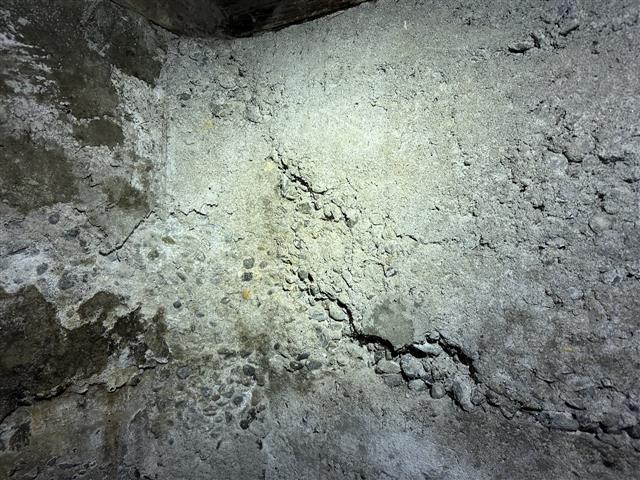
One of the deficiencies that is common in residential concrete foundations is known as honeycombing. Concrete honeycombing is a defect that can occur during the construction of concrete structures. It is characterized by a pattern of voids or cavities that resemble the cells of a honeycomb, hence the name. The voids are typically irregular in shape and can vary in size from small pinholes to large gaps.
This defect can be caused by a variety of factors, including improper placement, insufficient compaction, incorrect mixing ratios, and inadequate curing.
Preventing concrete honeycombing requires careful attention to the entire process of concrete placement, from the mixing of the materials to the curing of the finished product. Proper mixing and compaction techniques, as well as careful attention to formwork and curing conditions, can help to prevent this defect and ensure the integrity and longevity of the structure.
While concrete honeycombing can be a serious issue that compromises the safety and durability of a structure, not all honeycombing is created equal. In some cases, honeycombing is merely a surface condition that does not significantly affect the structure’s strength or stability.

To determine whether honeycombing is a surface condition or a more significant defect, it is important to inspect the concrete thoroughly and evaluate its strength and stability. If the honeycombing is found to be a surface condition, it can be addressed through cosmetic repairs or by leaving it as is if it is not a problem for the structure. If the honeycombing is a significant defect, it will require more extensive repairs to ensure the structure’s safety and longevity.
Repairing honeycombing in concrete structures depends on the severity and extent of the damage. Surface honeycombing can be addressed through cosmetic repairs that restore the appearance of the concrete, while more significant honeycombing that affects the structure’s integrity will require more extensive repairs.
The most common repair technique for honeycombing is to fill the voids with fresh concrete. This involves removing loose debris and filling the voids with a cementitious material to bond with the surrounding concrete. If the honeycombing is only on the surface of the concrete, an overlay may be used to cover the voids and create a smooth surface. This can be done with a variety of materials, including concrete, epoxy, or other coatings. If the honeycombing is more extensive and deeper into the concrete, injection grouting may be used to fill the voids. This involves injecting a grout material into the voids to fill the gaps and create a more solid structure. In some cases, the honeycombing may be so extensive that the affected portion of the concrete will need to be removed and replaced with fresh concrete.
It is important to note that repairs should be carried out by experienced professionals who have the necessary training and expertise to ensure that the repair is effective and does not compromise the integrity of the structure. Proper preparation and surface treatment are also essential to ensure the repair is successful and long-lasting.
You can see an example of someone performing cosmetic repairs of honeycombing in the following video:
